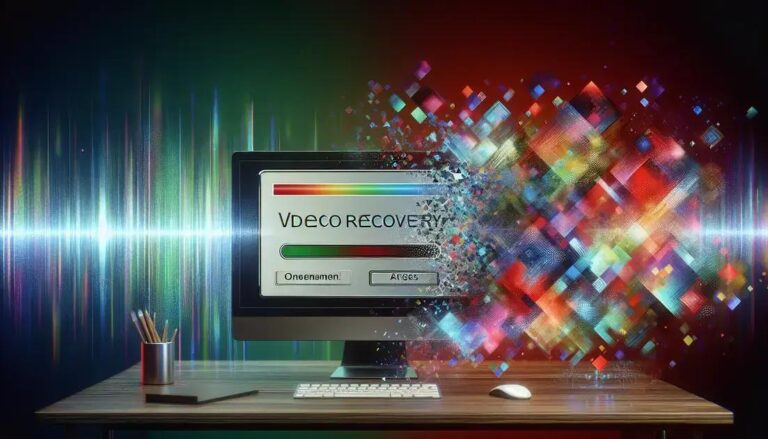How to Retrieve Deleted Messages: what you should try
Losing important messages can feel overwhelming, but learning how to retrieve deleted messages opens doors to recovery.
Discover proven methods that help you restore conversations from various messaging platforms and mobile devices today.
Start exploring these reliable techniques to recover your valuable chat history and important communications quickly.
Understanding Message Recovery Basics
Message recovery depends on several factors including the type of device, messaging app used, and how long ago the deletion occurred in your system.
Most smartphones automatically create backup copies of your conversations, making deleted chat recovery possible through various restoration methods available.
The success rate for message recovery varies, but acting quickly increases your chances of successfully retrieving lost conversations from your device.
Built-in Phone Recovery Options
Your smartphone likely contains built-in features designed to help restore text messages without requiring third-party software installations.
iPhone users can access recently deleted folders within their Messages app, while Android devices often maintain temporary message storage systems.
These native recovery tools represent the first step in attempting to get back deleted chats before exploring more advanced recovery methods.
iPhone Message Recovery
Apple devices store deleted messages for up to 30 days in a hidden recovery folder accessible through the Messages application settings menu.
Navigate to Settings, then Messages, and look for “Recently Deleted” to find conversations that can be restored with a simple tap command.
This iPhone-specific feature makes how to retrieve deleted messages straightforward for Apple users who act within the specified timeframe.
Android Recovery Methods
Android phones use different approaches depending on the manufacturer, with Samsung devices offering Smart Switch backup integration for message restoration.
Google Messages app users can recover conversations through their Google account backup, assuming automatic syncing was previously enabled on the device.
Third-party launchers and messaging apps on Android may have their own recovery systems built into the application settings.
Cloud Backup Message Retrieval
Cloud services provide powerful backup message retrieval options that can restore entire conversation histories from remote storage locations.
Popular platforms like iCloud, Google Drive, and OneDrive automatically backup messaging data when properly configured on your mobile device.
Understanding backup message retrieval processes helps you access conversations even after complete device replacement or major system failures occur.
iCloud Backup Restoration
iCloud backups include Messages data by default, allowing complete conversation recovery when restoring from a previous backup point.
Access iCloud.com or use device settings to view available backup dates and select the most recent version containing your deleted messages.
This method requires restoring your entire device to a previous state, so consider the implications before proceeding with restoration.
Google Drive Integration
Android users benefit from automatic Google Drive backups that preserve SMS, MMS, and various messaging app data in cloud storage.
Navigate to Google Drive, locate your device backup, and restore messaging data during the phone setup process or through settings.
Google’s backup system makes retrieve chat history simple for users who maintained automatic backup settings on their Android devices.
Third-Party Message Recovery Software
Professional message recovery software offers advanced capabilities for retrieving deleted conversations from various devices and operating systems effectively.
These specialized tools can scan device storage, locate deleted message fragments, and reconstruct complete conversations from recovered data pieces.
Choosing reliable message recovery software requires research into compatibility, success rates, and user reviews from verified customers and tech experts.
Popular Recovery Tools
Dr.Fone represents one of the most recognized names in mobile data recovery, offering specific modules for message retrieval across platforms.
PhoneRescue provides comprehensive recovery solutions for both iOS and Android devices, specializing in communication data restoration services.
These phone message tools typically require computer installation and direct device connection for deep scanning and recovery operations.
Software Selection Criteria
Evaluate message recovery software based on device compatibility, supported file types, recovery success rates, and customer support availability.
Free trial versions allow testing basic functionality before purchasing full licenses, helping you assess effectiveness for your specific recovery needs.
Research user reviews and professional recommendations to identify the most reliable messaging recovery service for your particular situation.
App-Specific Recovery Methods
Different messaging applications maintain unique backup and recovery systems that require specific approaches for successful message restoration.
WhatsApp, Telegram, Facebook Messenger, and other popular chat platforms each offer distinct methods for recovering deleted conversations and media files.
Understanding chat app recovery tips for each platform increases your success rate when attempting to retrieve app messages from various sources.
WhatsApp Message Recovery
WhatsApp automatically creates daily backups stored locally on your device and optionally in Google Drive or iCloud storage systems.
Uninstall and reinstall WhatsApp, then restore from backup during the setup process to recover deleted conversations and media content.
Local backups update more frequently than cloud versions, making them ideal for recent message recovery within the past few days.
Telegram and Signal Recovery
Telegram stores all messages in cloud servers, allowing recovery by logging into your account from any device or application.
Signal requires manual backup creation, but users can restore conversations by importing previously created backup files through settings.
These platforms demonstrate different approaches to how to retrieve deleted messages based on their underlying architecture and privacy focus.
Professional Recovery Services
Professional data recovery companies offer specialized services for complex message retrieval situations involving damaged devices or corrupted storage.
These services employ advanced techniques including physical device repair, specialized software tools, and cleanroom environments for delicate operations.
Consider professional help when standard recovery methods fail, especially for legally important communications or irreplaceable personal conversations.
When to Seek Professional Help
Physical device damage, water exposure, or complete system crashes may require professional intervention for successful message recovery operations.
Legal proceedings, business communications, or emotionally significant conversations justify the expense of professional recovery services in many cases.
Professional services typically offer higher success rates but come with significant costs and longer turnaround times for completion.
Service Selection Process
Research recovery service providers based on their track record, specialization in mobile devices, and transparent pricing structures.
Request detailed quotes and timelines before committing to professional services, ensuring you understand all costs and potential outcomes.
Verify credentials, read customer testimonials, and confirm data security practices before sharing sensitive device information with service providers.
Prevention and Future Backup Strategies
Implementing comprehensive backup strategies prevents future message loss and ensures easy recovery when deletion accidents occur on your devices.
Regular automated backups to multiple locations provide redundancy and increase the likelihood of successful message archive restore operations when needed.
Understanding backup frequency, storage locations, and restoration processes helps you maintain access to important conversations throughout device lifecycles.
Key backup strategies include:
- Enable automatic cloud backups for all messaging applications
- Create manual local backups before major device updates
- Use multiple backup locations for important conversations
- Test restoration processes periodically to ensure functionality
- Document backup settings and recovery procedures for reference
Automated Backup Configuration
Configure automatic backups for messaging apps, ensuring regular data preservation without requiring manual intervention or memory.
Set backup frequency based on your messaging volume, with daily backups recommended for heavy users and weekly for casual users.
Verify backup completion regularly and adjust settings when changing devices, updating apps, or modifying cloud storage arrangements.
Manual Backup Creation
Create manual backups before major events like device upgrades, app updates, or when traveling to areas with limited connectivity.
Export important conversations to email or document formats for additional security and accessibility across different platforms and devices.
Maintain backup documentation including creation dates, content summaries, and storage locations for efficient future reference and retrieval.
Troubleshooting Common Recovery Issues
Recovery attempts may encounter various obstacles including corrupted backups, incompatible software versions, or insufficient device storage space.
Understanding common problems and their solutions helps you navigate recovery challenges and increases your success rate for message retrieval.
Systematic troubleshooting approaches save time and prevent additional data loss during recovery attempts on your mobile devices.
Common recovery problems and solutions:
- Backup corruption – Try alternative backup dates or recovery methods
- Insufficient storage – Clear space before attempting restoration
- Software compatibility – Update apps and operating systems
- Authentication failures – Verify account credentials and permissions
Storage and Compatibility Issues
Ensure adequate free storage space before attempting message recovery, as restoration processes require temporary space for data processing.
Update all relevant applications and operating systems to current versions, eliminating compatibility issues that prevent successful recovery operations.
Check device specifications against recovery software requirements, ensuring your hardware meets minimum standards for successful operation.
Authentication and Permission Problems
Verify account credentials for all cloud services and messaging platforms before attempting backup restoration or recovery operations.
Grant necessary permissions to recovery software and backup applications, allowing them to access message data and storage locations.
Reset authentication tokens or passwords when experiencing persistent login failures during recovery attempts on various platforms.
Conclusion
Successfully learning how to retrieve deleted messages requires understanding multiple recovery methods and choosing appropriate techniques for your situation.
Quick action increases recovery success rates, while comprehensive backup strategies prevent future data loss and ensure easy restoration access.
Combine built-in phone features, cloud backups, and professional software to create a complete recovery toolkit for all messaging platforms.
Frequently Asked Questions
Can I recover messages deleted months ago from my phone?
Recovery success decreases over time, but cloud backups and professional recovery services may still retrieve older messages successfully.
Do all messaging apps support message recovery features?
Most popular apps offer some recovery options, but capabilities vary significantly between platforms and require different approaches.
Is it safe to use third-party recovery software?
Reputable recovery software is generally safe, but research providers carefully and avoid unknown or unverified applications completely.
How long do phone companies keep deleted text messages?
Carriers typically retain SMS data for 3-5 days, though policies vary by company and message content is rarely accessible to users.
Can I recover messages without a recent backup available?
Recovery without backups is possible using specialized software that scans device storage for deleted message fragments and data remnants.






